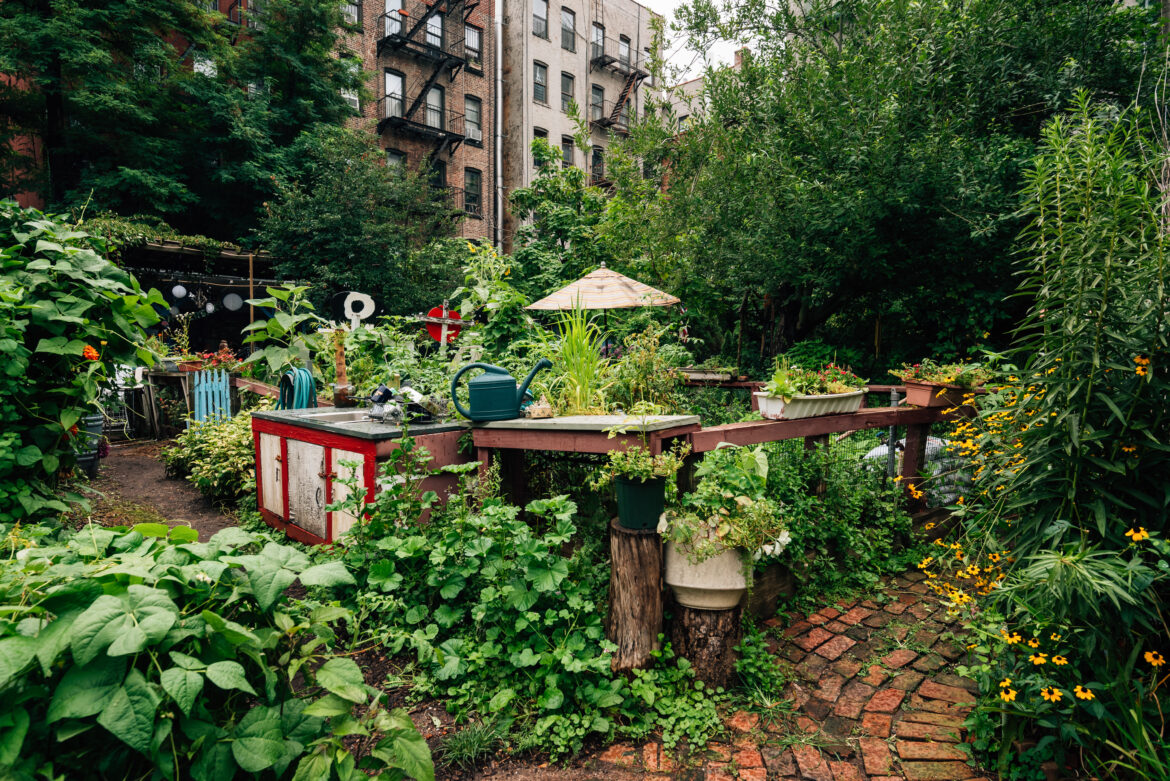As community members, activists and celebrities fight to save the beloved Elizabeth Street Community Garden from being demolished next week we thought it was a good time to highlight the importance of community gardens in food access, community engagement, food education and so much more.
New York City is a bustling metropolis known for its iconic skyline, cultural diversity, and vibrant neighborhoods. Amid the urban sprawl, community gardens have emerged as green sanctuaries that offer more than just aesthetic value—they play a crucial role in enhancing food access for city residents. These gardens, often nestled between skyscrapers or hidden in backlots, provide benefits that address food insecurity, promote health, and foster community cohesion.
1. Bridging the Food Access Gap
One of the most significant contributions of community gardens is their ability to address food access disparities. Access to fresh, nutritious food can be limited in many urban areas, particularly under-resourced neighborhoods. Community gardens serve as a vital resource in these areas, providing residents with the opportunity to grow their fruits, vegetables and herbs.
By cultivating their own produce, community gardeners gain access to fresh, organic, and often free food, which can be a game-changer for families struggling with food insecurity. This direct access to healthy produce not only improves diet but also reduces the financial burden associated with purchasing groceries.
2. Promoting Nutritional Education
Community gardens are more than just places to grow food—they are also educational hubs. Many gardens offer workshops and programs that teach participants about nutrition, gardening techniques, and sustainable practices. These educational opportunities empower individuals with the knowledge to make healthier food choices and understand the benefits of consuming fresh produce.
For children, community gardens can serve as interactive classrooms where they learn about where food comes from, the importance of nutrition, and the value of hard work. This hands-on experience helps instill lifelong habits that contribute to better overall health.
3. Enhancing Urban Ecosystems
In addition to their direct benefits for food access, community gardens contribute to the overall health of urban ecosystems. They help combat the urban heat island effect by providing green spaces that cool the surrounding environment. Gardens also support biodiversity by offering habitats for pollinators like bees and butterflies, which are crucial for the pollination of both garden plants and surrounding urban flora.
Furthermore, community gardens often employ sustainable practices, such as composting and water conservation, which reduce waste and promote environmental stewardship. These practices not only benefit the immediate garden environment but also contribute to broader ecological health.
4. Fostering Community and Social Connections
Community gardens are more than just places to grow food—they are spaces that foster social connections and strengthen community ties. Gardeners often come from diverse backgrounds, and working side by side in a garden can build relationships and a sense of camaraderie.
These shared spaces provide opportunities for collaboration, dialogue, and mutual support, creating a sense of belonging and community cohesion. Events such as harvest festivals, potlucks, and gardening workshops further enhance social interactions and promote community engagement.
5. Supporting Mental and Physical Well-Being
Engaging in gardening has been shown to have numerous mental and physical health benefits. For many people, gardening is a therapeutic activity that reduces stress and promotes mental well-being. The physical activity involved in gardening—such as planting, weeding, and harvesting—also contributes to overall fitness and can help reduce the risk of chronic diseases.
Moreover, the act of growing and harvesting one’s food can instill a sense of accomplishment and purpose, which is especially important in high-stress urban environments.
Community gardens in New York City are much more than patches of green in a concrete jungle—they are lifelines that bridge the gap between food insecurity and access to fresh produce. They serve as educational centers, promote environmental sustainability, foster social connections, and support both mental and physical health. As NYC continues to grow and evolve, the importance of community gardens in enhancing food access and overall quality of life cannot be overstated. Investing in and supporting these green spaces is essential for building a healthier, more resilient, and connected urban community.


